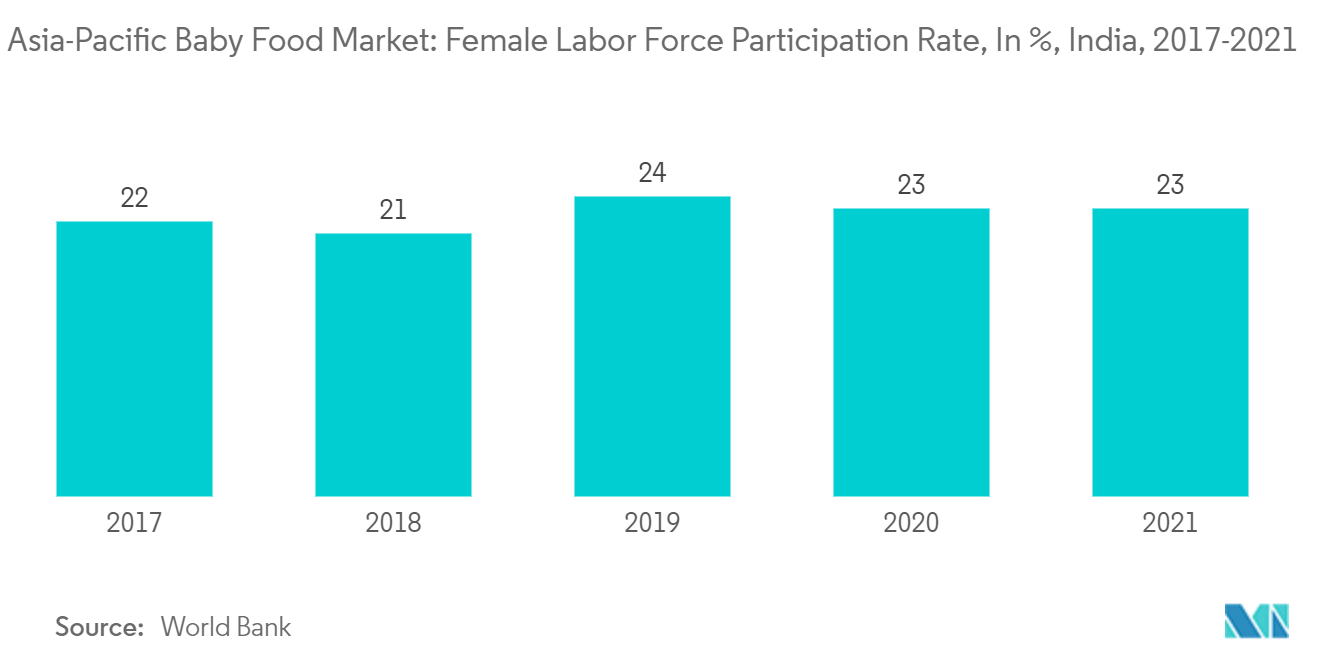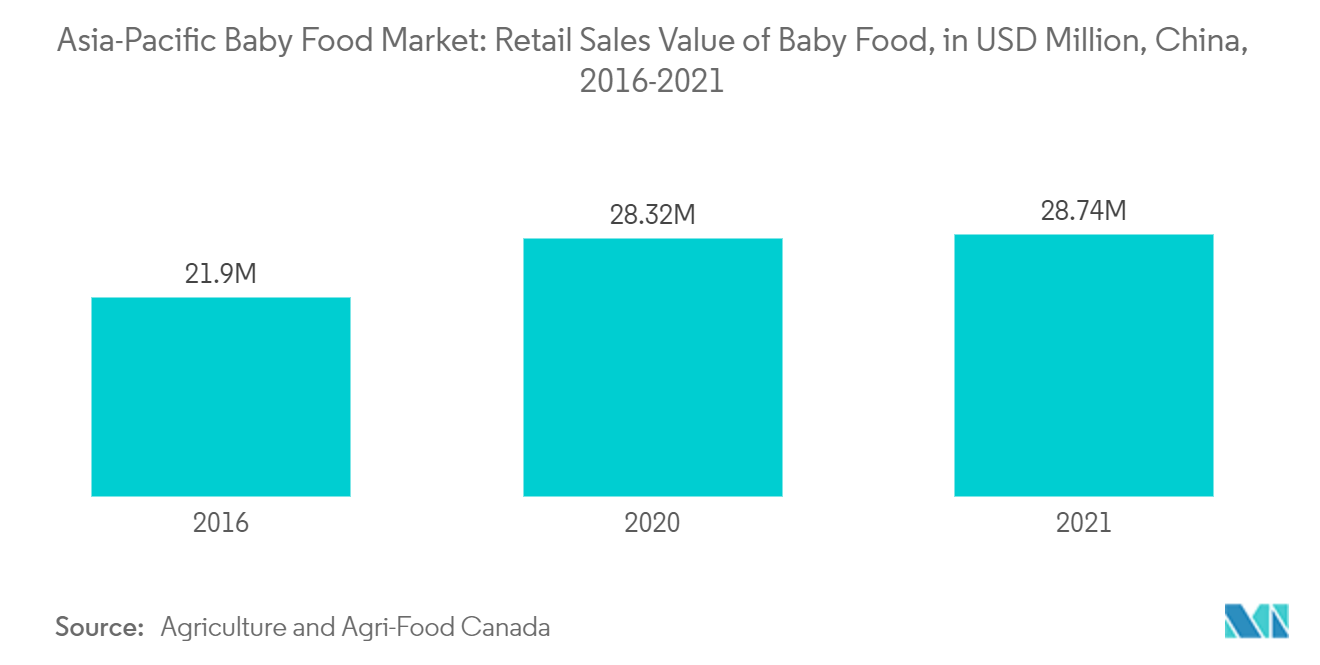Market Trends of Asia-Pacific Baby Food Industry
Increasing Awareness Among People and Working Women
The increasing awareness about providing additional benefits to the baby is driving the market. Baby food offers benefits such as vitamins and minerals like iron and essential fatty acids. Baby food products also contain probiotics found in breastfed babies' digestive tracts. Asia-Pacific is also home to the world's two major emerging economies, China and India, with considerable disposable income. The Asia-Pacific baby food market is driven by the rising number of women working in Asian countries. Since many working mothers return to their jobs shortly after giving birth, prepared or ready-to-eat baby foods and formulas are an appealing alternative for working mothers to provide their children with nutritious food.
The demand for organic baby food is expanding due to an increase in working women and a quick shift toward convenience foods, propelling the organic baby food market. There is a paradigm shift in the organization of modern households, with most adults needing more time for home administration, particularly food preparation and cooking. As a result, there is a rise in the demand for ready-to-eat or packaged foods. The baby food market is trending toward vegan-based foods. It is considered safe and nutritious for babies to eat vegan-based baby food. Baby food manufacturers are launching vegan-based products to cater to the growing vegan market. For instance, in July 2022, Nestle introduced China's first carbon-neutral product, a stage three formula for toddlers derived from farms in Switzerland that do not use herbicides or growth hormones. The tin lid and scoop of the product, known as Organic NAN 3, are also said to be manufactured from plant-based materials.

Increasing Population in the Region is Driving the Asia-Pacific Baby Food Market
China is a significant contributor and dominates the Asia-Pacific baby food market owing to its vast population and long-standing practice of eating milk formula. The Chinese baby food industry is being driven by the rising number of malnutrition instances and health concerns for babies' overall growth. The baby food market may be further boosted by the country's decreasing child mortality rate and increasing urbanization rate. According to the United Nations' World Population Prospects, China's infant mortality rate is 8.996 deaths per 1000 live births in 2021, down 3.22% from 2020. According to the World Bank, China's urban population in 2020 was 861,289,359, up 2.18% from 2019 which is increasing the demand for baby food products in the country.
Parents have boosted their spending as the economy has improved. They are willing to spend money on high-quality, expensive food for children's health. This trend has also propelled the demand for organic food as it is produced from pesticide-free fruits and vegetables and meat from animals without antibiotics or growth hormones. It is free of artificial flavors, preservatives, and colors. Due to these reasons, major players are investing in this market. For instance, in May 2021, Nestlé opened a factory in China to produce pouched baby food as part of a round of investment in the country's east. The world's largest food company has begun producing organic puree items for sale in China under its international baby-food brand Gerber at a factory in Laixi, Shandong province.


